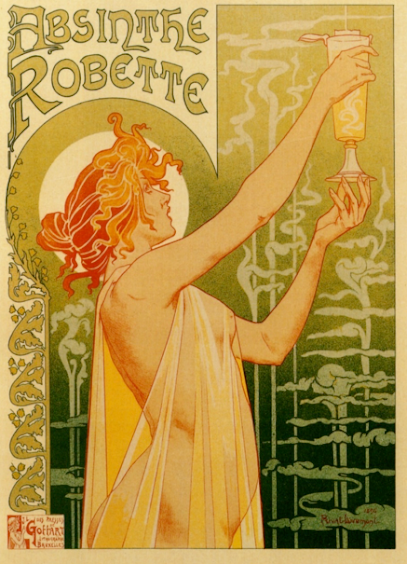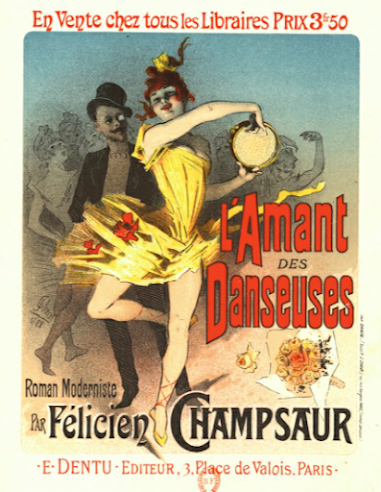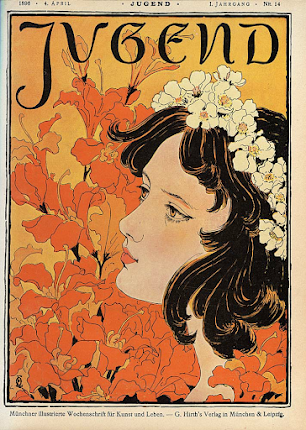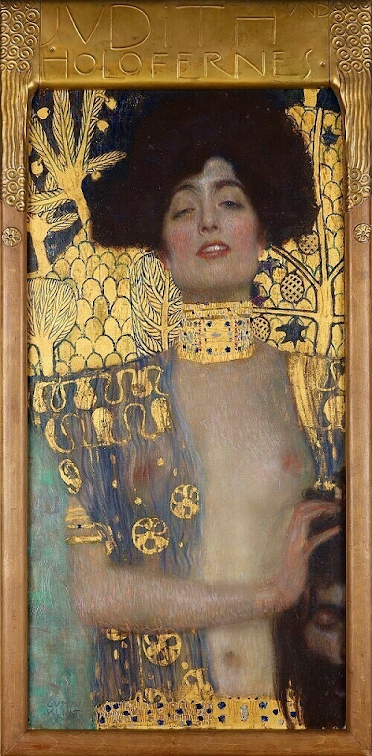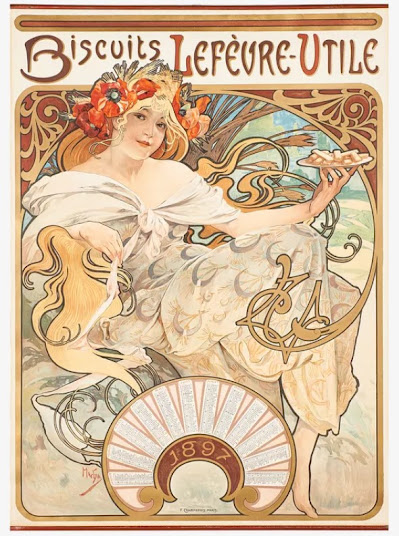Job, Alphonse Mucha
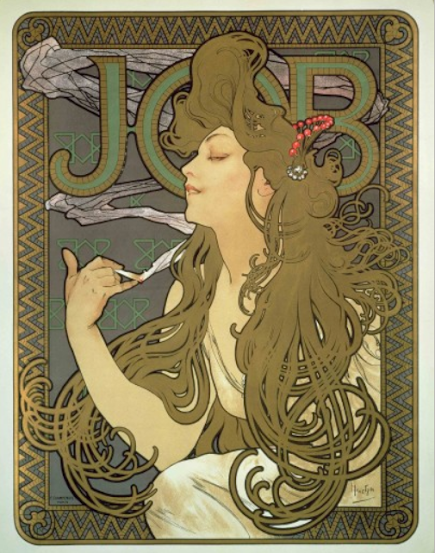
In this advertisement for cigarette paper, there is a central female figure. This lithograph print displays Mucha's whiplash curves. The flowing of her hair help as a visual leading line. This artwork is adorned with decorative elements around the border. The bold text behind the women's head is balanced well. This particular print is different from Biscuits Lefevre Utile. The colors used within this artwork are much darker and the balance is weighted differently. Some similarities are, of course, those whiplash curves, organic shapes, and asymmetry. Mucha, Alphone. Job. 1896.






